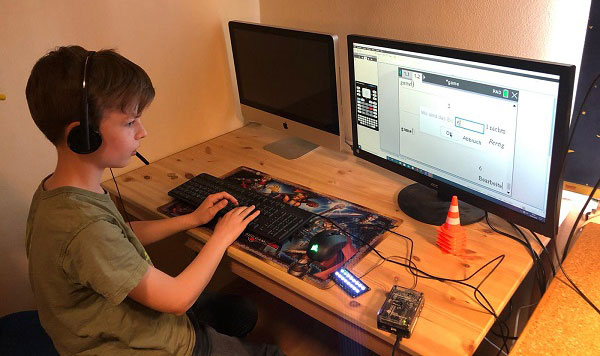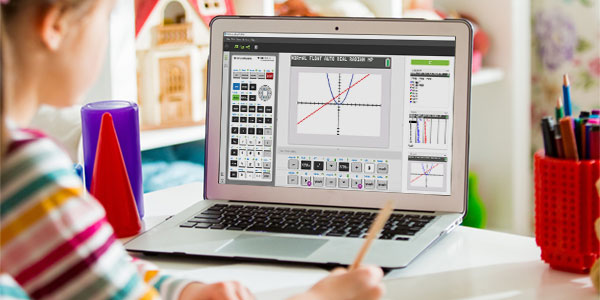It Is Okay to Rely on Technology

Every student has the right to receive proper education according to their individual abilities, talents and gifts. The individualization of education has been made even more challenging during the coronavirus lockdown, and collective distance learning made this aspiration close to impossible to realize. I witnessed teachers taking on the challenges imposed by forced home schooling, reinventing their teaching style in no time to make the best of the situation despite the constraints. Even though the situation was far from ideal, these teachers deserve our admiration and support for the months to come. As of September 2020, we already know the coming months will remain challenging.

Handing out paper copies
From all the feedback we received about distance learning, there is no doubt that the technical infrastructure of schools needs to be improved. This can be achieved through extra investments in technology and infrastructure. Personally, I think this is the easy part of the challenge. The harder part is to improve the use of technology in the classroom, both in online classes and in person.
During the coronavirus lockdown, teachers fell back en masse into traditional teacher-centred teaching methods, as the international Math@Distance study conducted by Utrecht University and the University of Duisburg-Essen shows. From a pedagogical perspective, these methods can be compared to handing out paper copies and sharing them by email or cloud. These teaching practices are far removed from what we want to achieve in terms of 21st century skills, specifically the four Cs: critical thinking, creativity, collaboration and communication.

Technology must be embraced
Technology is there to support teachers, yet it must be embraced. For instance, Texas Instruments TI-Nspire™ CX technology is designed to support the pedagogical concept of multiple representations. This allows approaching a mathematical question from different angles so students can access the mathematical concept that speaks to them most. Think about quadratic functions: Some students may find their inroad algebraically by studying the related equation; other students may become absorbed by the geometric symmetry of the related graph; and a third group may realize the connection to accelerated movement.
Reflection from a higher perspective
In Europe, teachers usually complete their preservice education with a university or college diploma, meaning they are equipped with decent subject-specific, psychological and pedagogical backgrounds when entering the classroom. For many teachers, after years of working in the classroom, this knowledge ends up buried under a pile of everyday tasks. The T³ Europe network educators believe that professional development in terms of technology is not just about the latest, greatest and fanciest technology, as such, but about reflection from a higher perspective. The most perfect exercise does not help much when the underlying pedagogical intentions have not been understood.

New professional development and content concepts
Experts often tend to take things for granted and forget to talk about the obvious, which for a non-expert is not obvious at all. To make pedagogical reflection commonplace among all classroom teachers, it is important to provide opportunity by design when working out new professional development or related content concepts. This idea is at the basis of a sustainability content project that our T3 Europe teacher network is working on: STEM exists for a purpose. For example, helping to accomplish the United Nation’s 17 sustainable development goals is a noble aim, so what can STEM education do to raise awareness and stimulate interest in such important questions?
Many people have been raising concerns about the curricular content that students have missed because it was not taught, and therefore not learned, over the last months. Firstly, I believe that this generation of students have learned a lot. Perhaps not everything has been in the curriculum, but they have certainly learned about things that matter in life, perhaps even more so. Secondly, I am convinced that it is okay to not teach every topic in every detail, especially when it comes to drilling routines at higher and higher levels. This is, after all, why machines were invented. As the great mathematician Gottfried Wilhelm Leibniz (1646–1716) once said: “For it is not worthy of an excellent man to spend precious hours like a slave in the basement of simple calculations. These tasks could be handed over without worries if we had machines.”
Focus on proper support for students
Thanks to technology one can outsource certain tasks which helps the learner focus on the actual topic. In this regard, Bruno Buchberger’s Black-Box/White-Box principle comes to mind. The Austrian professor of computer mathematics states that in the white-box phase of teaching, when the topic is new to students, the pertinent parts of the symbolic computation systems should not be used. However, in the black-box phase, when students have completely mastered the new topic, it is essential to use these systems in modern maths teaching. Embracing this principle may help teachers to relax and allow them to refocus on what education is all about: the right of students to receive proper support to unfold their individual abilities, talents and gifts.
